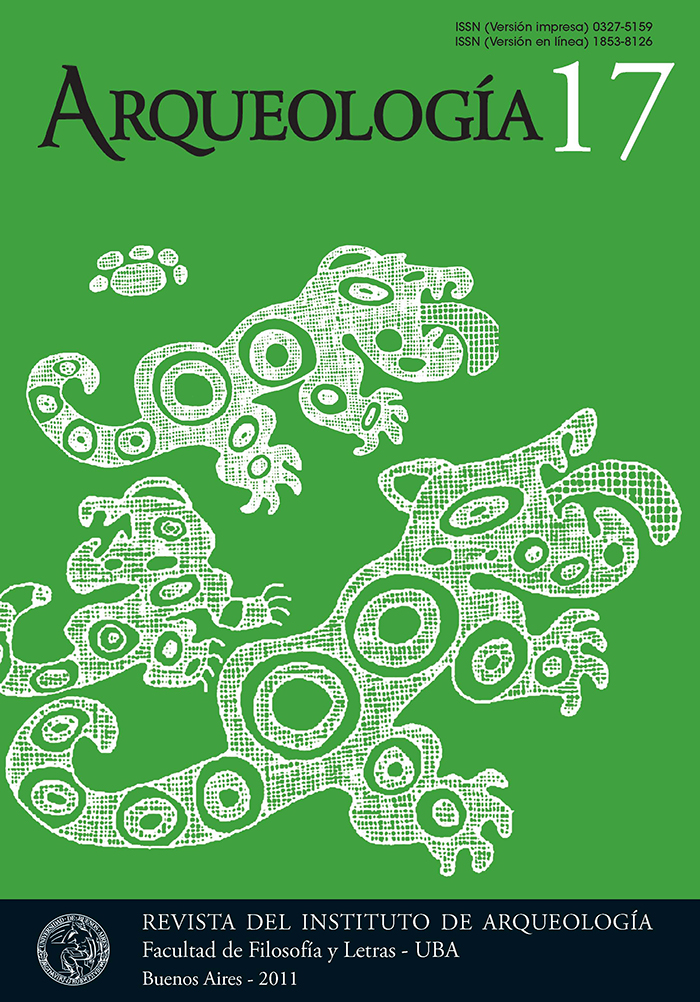Diversity does the trick: Pastoral management strategies at Quebrada de Humahuaca, Jujuy province, between 900 and 1.200 AD
Keywords:
Llama Herds, Production, Products, Quebrada De Humahuaca, Subsistence
Abstract
Nowadays there are many studies of archaeofauna at Quebrada de Humahuaca, Jujuy Argentina. They cover a wide period of time, wich makes possible to characterize and discus tendencies of different nature related to consumption, hunting, livestock patterns, herd management strategies of former from former inhabitants. The discussion proposed in this research is closely involved to llama-herd management, based on a breeding model emphosizes put emphasis on changes that might have evolved as the time went on. Specifically, we refer to techniques related to production of different goods (either primaries o secondaries), according to whay was the required of the activity (meat, wool, secondary, load, etc.). That this pattern suggests a major production of primaries products in the Formative Period (Early times) with a transformation towards secondary products as we get close to the Regional Developments Period. For the purpose of this discussion we introduce the analysis of a sample that, according to radiocarbon dating could be set around the year A.D. 1100. In Quebrada de Humahuaca we do not have faunal documents for this segment. The site involved is known as Alto de la Isla and offers some conclusions that allow the discussion of these tendencies.Downloads
Download data is not yet available.
How to Cite
Mercolli, P. H. (1). Diversity does the trick: Pastoral management strategies at Quebrada de Humahuaca, Jujuy province, between 900 and 1.200 AD. Arqueología, 17, 81-95. https://doi.org/10.34096/arqueologia.t17.n0.1838
Issue
Section
Articles
Authors who publish in this journal agree to the following conditions:
- Authors retain copyright and yield to the journal right of first publication with the work registered with attribution license Creative Commons, which allows third parties to use the published always mentioning the authorship of the work and first publication in this magazine.
- Authors can make other independent and additional contractual arrangements for the non-exclusive distribution of the version of the article published in this issue (p. Eg., Inclusion in an institutional repository or publish it in a book), provided that clearly indicate that the work was published for the first time in this magazine.
- It allows and encourages the author / s to publish their work online (eg institutional or personal pages) before and during the process of revision and publication, as it can lead to productive exchanges and greater and more rapid dissemination of work published (See The Effect of Open Access).





(1)13.png)






1.jpg)
1.jpg)


13.png)
1.png)


(1)1.png)









